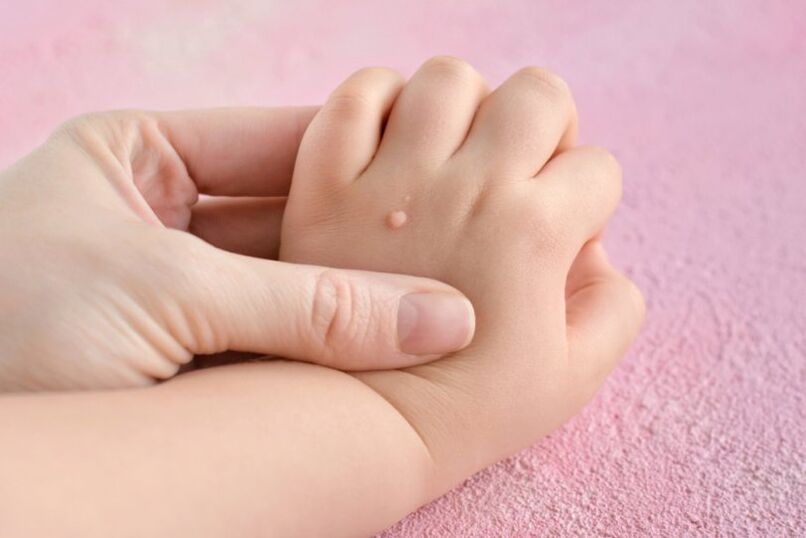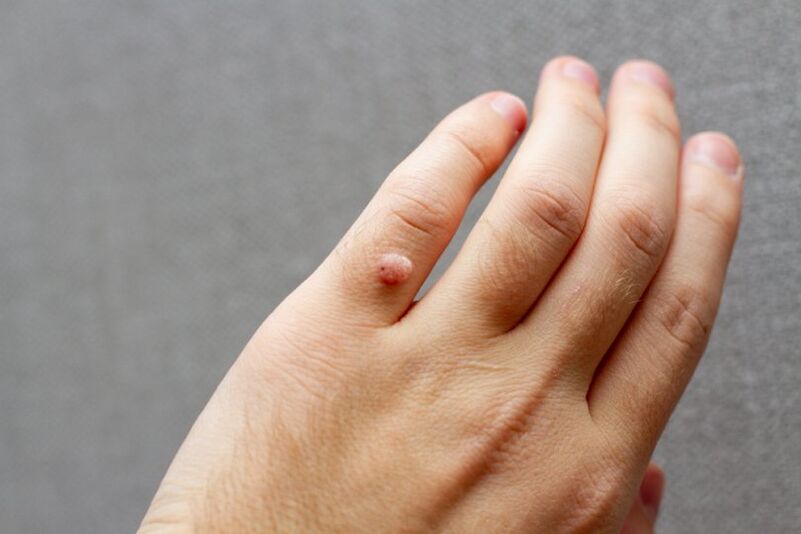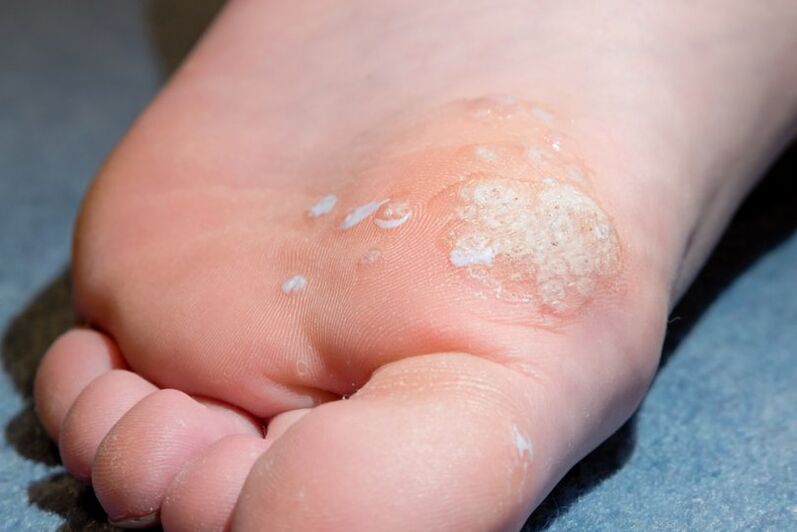A wart is a benign formation on the skin that looks like a rounded protrusion, which is caused by a strong growth of the surface epithelium and papillary layer.
In most cases, HPV causes cell proliferation, which is triggered by external and internal factors - restlessness, decreased immunity, and in some types - increased sweating of the limbs. You can become infected with HPV through contact with carriers and objects. This does not apply to senile warts - their formation is not viral in nature.



The size of the formations varies on average between 1 and 15 mm (senile ones reach 6 cm). Their surface is uneven, so they get dirty easily, which is why their color can change from flesh to brown over time. Multiple units can group together if they are close. All warts can be removed. In some cases, the doctor may decide to observe without removing if the patient is feeling well.
When to see a doctor urgently:
- education is in the genital area;
- itching and discharge are observed in the area of the neoplasm;
- there is a heterogeneous color, spots;
- changes its shape and color;
- impaired in everyday life due to the location;
- you are not sure if it is a wart.
Types of warts
There are 4 types:
- ordinary (simple) - forms on the hands (internal subgroup - soles);
- flat - occurs mainly in young people, therefore the second name of flat warts is youthful;
- pointed - formed in the area of the genitals, infection with the HPV types that cause it;
- senile - the causes are unclear, it is not caused by HPV, it develops in middle-aged and older people.
Common warts are 1-10 mm in size, dense, keratinized. The average life of such a formation is about 2 years, after which it spontaneously dissolves. The most common place of localization is the brushes.
Plantar warts are formations on the feet that at first look like small calluses, then a rough surface with black dots appears in the center and a small roller on the edge. Horny formations cause discomfort, as a result of which the patient feels pain while walking. They can lead to loss of mobility and performance. The removal of plantar warts significantly improves the quality of life.
Flat warts have obvious boundaries, are small in size - up to 5 mm, slightly rise above the surface of the skin by 1-2 mm. Any shape - round or uneven. Skin irritation, scratches, cuts can provoke the appearance. Favorite places for the localization of this type of formations are the face, hands and legs.
Genital warts are located on the genitals. They are treated by removal, and quite quickly, as they can be large in size. The infection occurs sexually, the probability is higher in the presence of lumbar wounds. Condylomas are pink nodules that fuse to form papillary growths that adhere to the body on a stalk.
Senile warts (seborrheic keratosis) are the only ones not related to HPV. We can speak of a genetic predisposition due to the frequent positive family anamnesis. Formations can reach quite large sizes - up to 4-6 cm (average size - 0. 2-3 cm). They spawn in groups of up to 20 units. The most common places of localization are the chest, face, neck, forearm, and hand.
At first, the elements are flat and small, the surface is uneven. They are covered with an easily removable bark. Then the bark becomes denser, drier, covered with cracks. Over time, their thickness can be 1-2 cm. As they age, they take the shape of a mushroom cap and darken, although they were originally light yellow or pink. They contain impurities. Formations never become cancerous.
Wart removal
The treatment of the wart is selected individually by the doctor, depending on its type, size, contraindications and other aspects. The clinic offers 4 methods for removing warts, papillomas and condylomas:
- use of a radio wave scalpel;
- CO2 removal by laser;
- cryodestruction;
- diathermocoagulation.
They are suitable for removing flat and prominent warts. Unfortunately, none of the presented methods can remove HPV from the body, so the probability of recurrence is 30%. Furthermore, none of the methods gives a 100% guarantee, additional procedures may be required. Scars may remain after the removal, choosing the right clinic and technique will help to avoid this. Experienced dermatologists in a professional clinic and quality equipment manufactured according to modern standards are a combination that ensures high-quality service, pain-free and quick recovery. Infiltration and application anesthesia are available.
laser removal
The laser creates a powerful light stream of energy, which causes a sudden increase in temperature in the tissues. The advantages of laser removal of papillomas and warts are the absence of bleeding, blisters, and large scars. The procedure takes 5-7 minutes. As a general rule, formations are eliminated the first time.
Warts are removed according to the following plan:
- skin treatment with antiseptic;
- anesthetic treatment (injection or lubrication);
- treatment of papilloma on the entire surface;
- treatment and dressing of the resulting wound.
Cryodestruction
The treatment is done with liquid nitrogen. This procedure is used to remove a wide range of tumors, and even in the treatment of internal organ tumors, cervical diseases, and liver surgery. As a result of low temperature, the water inside the cells freezes, the cell explodes and dies.
Removal procedure:
- anesthesia (if located in a large area with thin skin);
- exposure with a cotton swab soaked in liquid nitrogen (5-30 seconds depending on the size);
- 2 minutes to wait. Examination. If necessary, repeat the procedure.
The next day, a blister appears on the skin, which gradually disappears. The patient's task is to damage the blister prematurely, gently wash it off, apply a patch, and protect it from external influences.
Diathermocoagulation
This treatment method includes cauterization of tissues with high-frequency current, contact and non-contact methods. The procedure is performed with the help of EKhVCh (high-frequency electrosurgical device). It differs from the "Surgitron" radio wave scalpel in the use of high-frequency current - about 400 kHz (up to 4 MHz with the radio scalpel). The method enables bloodless coagulation of the skin and effectively treats formations.
radio wave scalpel
Surgitron is used as a radio wave scalpel when removing warts, which operates on radio waves with a frequency of 3. 8-4. 0 MHz. The wave vaporizes the cells it is directed at and does not affect neighboring cells. This method is often used on the face, neck, and genitals due to its delicacy. The advantages also include high speed, bloodlessness, minimal swelling, and rapid recovery.
The operation is as follows:
- the skin is treated with an antiseptic;
- anesthesia is used (injections, cream);
- the doctor picks up the waveguide of the desired shape and removes the tumor;
- antiseptic treatment.
Make an appointment with a dermatologist
The network of NEARMEDIC clinics offers many effective methods for the removal of flat, pointed, senile, common, including plantar warts. An inexperienced person can confuse warts with other tumors that can turn into a malignant form - you should consult a dermatologist before starting treatment.
In our clinic, experienced dermatovenereologists, candidates and doctors of medicine deal with the treatment, with whom you can consult even in difficult cases. On the website, you will find the name, photo and biography of each specialist, along with their place of admission. You can request an appointment with a specific doctor here.
Removing the visible manifestations of the problem is not enough to reduce the likelihood of relapse. For this, general therapy is used with antiviral drugs that reduce the activity of the human papillomavirus. The doctor makes a full diagnosis, prepares a treatment plan, advises on all types of removal and recommends the most effective one in the given case. Consult a specialist at the first signs of illness.
The cost of the medical order and removal is included in the table. Please note that removing 2-5 or more than 5 formations is cheaper. To schedule an appointment, feel free to call or use the form on the website.














































































